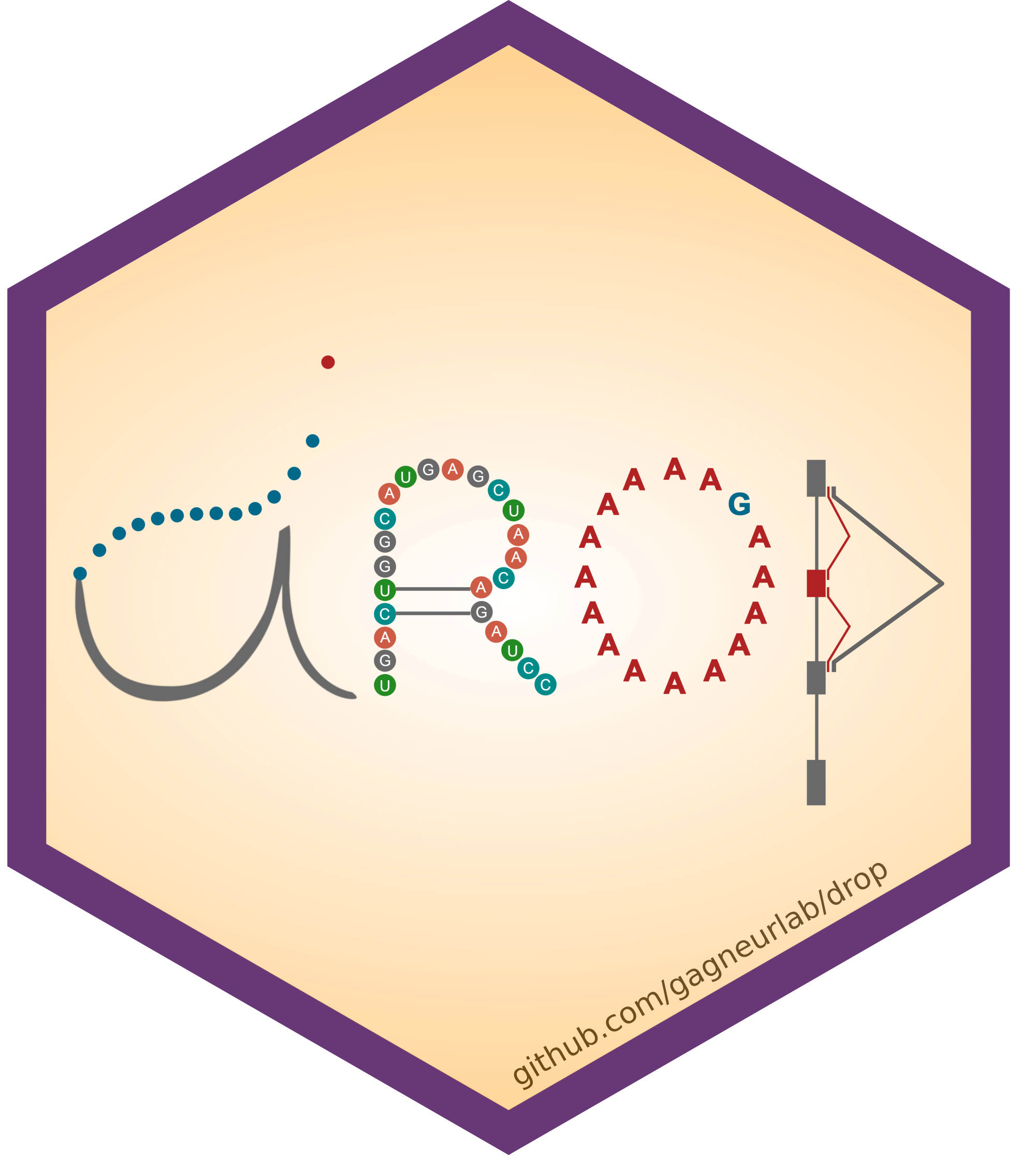Detection of RNA Outlier Pipeline
The manuscript is now available in Nature Protocols. SharedIt link.
Quickstart
DROP is available on bioconda. We recommend using a dedicated conda environment. (installation time: ~ 10min)
conda install -c conda-forge -c bioconda drop
Test installation with demo project
mkdir ~/drop_demo
cd ~/drop_demo
drop demo
The pipeline can be run using snakemake commands
snakemake -n # dryrun
snakemake --cores 1
Expected runtime: 25 min
For more information on different installation options, refer to the documentation
Set up a custom project
Install the drop module according to installation and initialize the project in a custom project directory.
Prepare the input data
Create a sample annotation that contains the sample IDs, file locations and other information necessary for the pipeline. Edit the config file to set the correct file path of sample annotation and locations of non-sample specific input files. The requirements are described in the documentation.
Execute the pipeline
Once these files are set up, you can execute a dry run from your project directory
snakemake -n
This shows you the rules of all subworkflows. Omit -n and specify the number of cores with --cores if you are sure that you want you execute all printed rules. You can also invoke single workflows explicitly e.g. for aberrant expression with:
snakemake aberrantExpression --cores 10
Datasets
The following publicly-available datasets of gene counts can be used as controls. Please cite as instructed for each dataset.
If you want to contribute with your own count matrices, please contact us: yepez at in.tum.de

